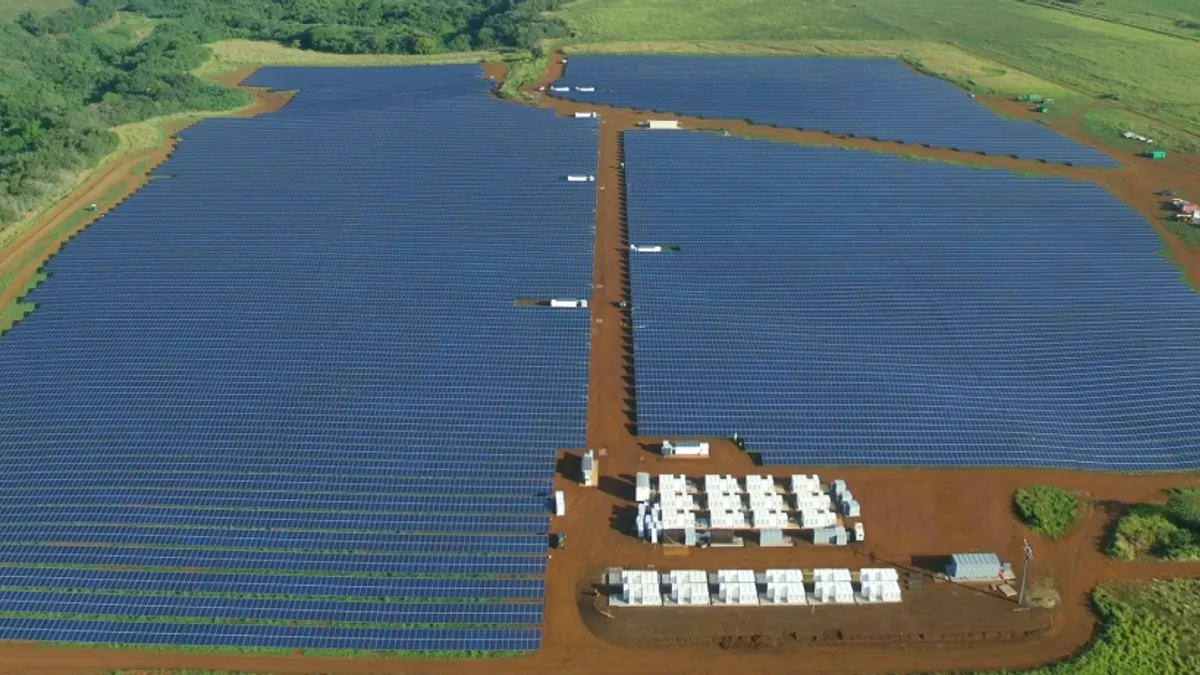Dive Brief:
- Arizona Public Service will install a 50 MW, 135 MWh battery that will help it shift the output of a 65 MW solar farm to deliver power when customer electricity demand is greatest.
- The APS contract with developer First Solar will allow it to use the battery to deliver solar power when electricity use is at its peak, between 3 p.m. and 8 p.m. each day. Pricing information was not released.
- The new project comes weeks after an Arizona utility regulator proposed an 80% clean energy mandate and 3 GW storage target for the state. That plan, under evaluation by regulators, would push utilities to deliver zero-carbon power when demand is greatest.
Dive Insight:
The new APS project aims to solve a fundamental problem with renewable energy — it doesn't always deliver power when customers need it.
Solar, in particular, tends to generate the most at midday and then back off as the sun sets in the afternoon, precisely when power usage peaks in states like Arizona or California. That situation contributes to the so-called "Duck Curve" in high-solar states and can push electricity prices into negative territory, as it regularly did in California last spring.
The APS project tackles the issue with what it calls a "solar-fueled" battery. The 15-year power purchase agreement with First Solar would allow the utility to soak up power from an adjacent solar farm and discharge it from a 2.7-hour duration battery as the sun sets.
APS says the contract would allow it "full use" of the battery to "maximize hourly capacity until it is fully discharged." The company expects the project, built next to an existing gas plant in Maricopa County, to be online by 2021.
The APS project comes on the heels of a pair of high-profile solar-plus-storage projects announced last year. In January, a Hawaii co-op signed a deal for a 28 MW solar array with a 100 MWh battery system for $0.11/kWh, below the retail rate of electricity there. And in May, Tucson Electric Power signed a deal for 100 MW of solar and a 120 MWh battery for "significantly less than $0.045/kWh over 20 years," the lowest publicly available price for such a project.
APS did not release pricing information for its new project, but charging the battery mostly with solar power could allow it to qualify for a 30% federal investment tax credit for solar facilities.
The project also comes amid a new regulatory push in Arizona for solar and storage. Last month, Arizona Corporation Commissioner Andy Tobin released an 80% clean energy target that would require utilities to deliver an increasing portion of their renewable energy during peak electricity demand hours, much like the APS project. Regulators asked for industry comment on the proposal at their February meeting.
APS has so far withheld final judgment on Tobin's proposal, but told Utility Dive in an email that it "set forth a bold, challenging vision for Arizona’s energy future." The utility currently plans to add more than 500 MW of storage and over 5 GW of natural gas generation to its mix by 2030, but the balance could change as the utility reviews its plan every two years.
"We share his goal of continuing Arizona’s leadership in clean energy, battery storage, electric vehicles and other elements of a smart energy infrastructure," an APS spokesperson emailed. "Commissioner Tobin’s plan also recognizes the critical role emission-free nuclear energy plays in any serious plan for clean Arizona energy."














